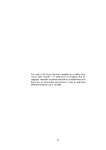BICCHERNA COVERS AND SIENESE TRECENTO SOCIETY: FIVE CASE STUDIES
| dc.contributor.supervisor | Bokody, Peter | |
| dc.contributor.author | Klein Essink, Marietta H.W. | |
| dc.contributor.other | Faculty of Arts, Humanities and Business | en_US |
| dc.date.accessioned | 2019-11-05T15:08:20Z | |
| dc.date.issued | 2019 | |
| dc.identifier | 10563798 | en_US |
| dc.identifier.uri | http://hdl.handle.net/10026.1/15120 | |
| dc.description.abstract |
In the study of trecento Sienese Biccherna covers several questions immediately arise: how and why did the iconographies of their figurative and inscriptive parts change and did the magistrates whose names appear as signatories to the tax returns influence the covers’ commission. In five case studies, this dissertation shows that the hitherto stilted and formal representation of the Camarlengo around the early trecento changed into a narrative of topical social and religious events, thereby turning the covers into important primary civic sources of religious and social historical information. A close observation of the meaning of the narratives and their inscriptions highlights their significant contribution to the understanding that, as works of art, they were the result of an artistically valuable social transaction, involving the civic authorities and the people, their audience. The importance of the civic officials is conveyed by the fact that they were mentioned in conjunction with the figurative scenes, not for who they were. By emphasizing their civic function, the panels were part of Siena’s collective civic tradition. Together, they formed part of her visual identity culture, identified by the many well-known works of art they reproduced. Therefore, the thesis would be confirmed in its effort to show that the officials of the Treasury office, in accordance with Siena’s civic tradition, aspired to imitate images that were on show elsewhere in the city for the covers of their account books, images that would be well-known to the people. My research into these fascinating, though relatively unknown painted wooden panels that formed the front covers of the commune’s tax records was greatly assisted by modern social historical scholarship, as well as a close in situ study at Siena’s State Archives. | en_US |
| dc.language.iso | en | |
| dc.publisher | University of Plymouth | |
| dc.rights | Attribution-NonCommercial-NoDerivs 3.0 United States | * |
| dc.rights.uri | http://creativecommons.org/licenses/by-nc-nd/3.0/us/ | * |
| dc.subject | Book Covers | en_US |
| dc.subject | Administration | |
| dc.subject | Early Renaissance Italy | |
| dc.subject | Italy, Siena | |
| dc.subject | Taxation | |
| dc.subject | 14th Century | |
| dc.subject | Case Studies | |
| dc.subject.classification | ResM | en_US |
| dc.title | BICCHERNA COVERS AND SIENESE TRECENTO SOCIETY: FIVE CASE STUDIES | en_US |
| dc.type | Thesis | |
| plymouth.version | publishable | en_US |
| dc.identifier.doi | http://dx.doi.org/10.24382/1187 | |
| dc.rights.embargodate | 2020-11-05T15:08:20Z | |
| dc.rights.embargoperiod | 12 months | en_US |
| dc.type.qualification | Masters | en_US |
| rioxxterms.version | NA |
Files in this item
This item appears in the following Collection(s)
-
01 Research Theses Main Collection
Research Theses Main



